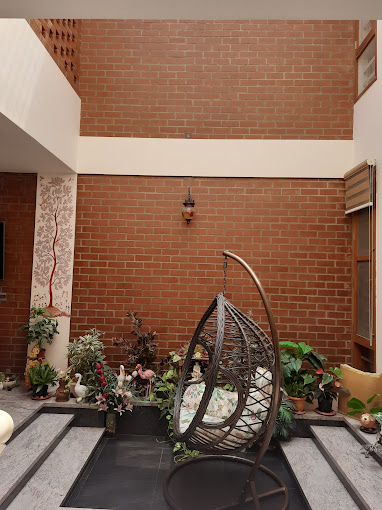Kitchen Interior Design: Creating the Heart of the Home
A kitchen is more than just a space for cooking; it’s the heart of the home, where meals are prepared, memories are made, and families come together. Whether you're remodeling an existing kitchen or designing a brand-new one, the interior design plays a significant role in creating a functional and aesthetically pleasing environment. A well-designed kitchen should not only look beautiful but also meet the practical needs of the household.
Layout and Functionality
The foundation of any great kitchen design is the layout. The layout needs to promote efficiency, ensuring that work areas such as the stove, sink, and refrigerator are arranged in a practical and convenient manner. A popular layout is the "work triangle," which places these three key areas in a triangular pattern to minimize unnecessary movement and streamline cooking tasks.
For smaller kitchens, a galley layout or L-shaped kitchen might be ideal, as these configurations maximize space. Larger kitchens can benefit from more open-plan designs, often incorporating islands or breakfast bars. These islands not only provide additional counter space for meal prep but can also serve as a social hub for family gatherings or casual meals.
Storage Solutions
A well-organized kitchen requires ample storage. Cabinets are essential, and choosing the right type is crucial. Traditional cabinets with shelves are standard, but modern kitchens are incorporating pull-out drawers, lazy Susans, and built-in dividers to maximize the available space. For a clean and seamless look, many kitchens now feature handle-less cabinetry or hidden storage that conceals appliances and utensils.
Vertical storage, such as tall cabinets and open shelving, can also enhance the kitchen’s storage capacity. With smart storage, every inch of space can be utilized efficiently without overcrowding. The design should balance open shelves, which allow for easy access and decoration, with closed cabinetry, which keeps items out of sight and organized.
Color and Materials
Color sets the mood of the kitchen. Light shades like whites, creams, and pastels create an open and airy feel, while darker tones, such as navy or charcoal, bring warmth and sophistication. The color scheme should complement the overall style of the home and can range from minimalist monochrome to rich, vibrant hues.
Materials also play a vital role in kitchen design. Countertops are often made from durable surfaces like granite, quartz, or marble, which are not only aesthetically pleasing but also resilient to heat, stains, and wear. For cabinetry, wood remains a classic choice, but modern designs also feature materials such as stainless steel, glass, and lacquered finishes.
Flooring is another important consideration. Tiles, hardwood, and laminate are commonly used, but for a sleek, contemporary look, concrete floors or luxury vinyl can offer a chic and functional solution.
Lighting and Ambience
Lighting is essential to both the function and ambiance of a kitchen. Natural light, where possible, should be maximized with large windows or skylights, creating an inviting atmosphere. However, artificial lighting is just as important for task areas like the sink, stove, and countertops. Under-cabinet lighting, pendant lights over an island, and recessed lighting are all popular options that provide ample illumination and contribute to the kitchen’s style.
Ambient lighting, which adds warmth and mood to the space, can be incorporated through pendant lights or even chandelier-style fixtures. A mix of task, ambient, and accent lighting ensures a well-lit, inviting kitchen that’s functional both day and night.
Personalization and Style
The kitchen is a space that can reflect your personal taste and style. Whether you prefer a contemporary, rustic, industrial, or traditional look, the design elements should match your preferences. Incorporating unique features such as a statement backsplash, custom cabinetry, or designer appliances can transform a functional space into a visually stunning one.
Open shelving offers a chance to display beautiful dishware, plants, or cookbooks. The addition of decorative elements like artwork, rugs, or colorful utensils can further personalize the kitchen and make it feel like an extension of the home.
Conclusion
Effective kitchen interior design requires a balance between aesthetics and functionality. By carefully considering layout, storage, materials, lighting, and personal style, you can create a space that not only meets the practical needs of cooking and entertaining but also enhances the overall beauty of your home. Whether you’re designing a small apartment kitchen or a spacious gourmet kitchen, thoughtful planning will ensure that your kitchen becomes a welcoming, efficient, and inspiring part of your home.
